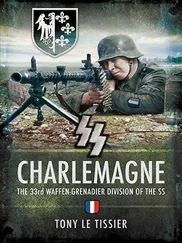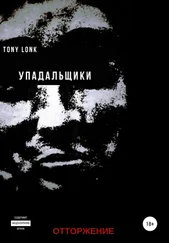But the only way to guarantee such an outcome was to align the political system of the states of eastern Europe with that of the Soviet Union and this, from the start, was what Stalin wanted and intended. On the one hand it might seem that this goal was straightforward enough: the old elites in countries like Romania or Hungary had been discredited and it would not be difficult to remove them and begin afresh. In many places the Soviet occupiers were at first welcomed as liberators and harbingers of change and reform.
On the other hand, however, the Soviet Union had almost no leverage in the domestic affairs of its western neighbours beyond the authority of its overwhelming military presence. Communists in much of the region had been banned from public life and legal political activity for most of the previous quarter century. Even where Communist parties were legal, their identification with Russia and the rigid, sectarian tactics imposed from Moscow for most of the period after 1927 had reduced them to a marginal irrelevance in East European politics. The Soviet Union had further contributed to their weakness by imprisoning and purging many of the Polish, Hungarian, Yugoslav and other Communists who had taken refuge in Moscow: in the Polish case the leadership of the inter-war Polish Communist Party was almost completely wiped out.
Thus when Mátyás Rákosi, the leader of the Hungarian Communist Party, was returned from Moscow to Budapest in February 1945, he could count on the support of perhaps 4,000 Communists in Hungary. In Romania, according to the Romanian Communist leader Ana Pauker herself, the Party had less than 1,000 members in a population of nearly 20 million. The situation in Bulgaria was not much better: in September 1944 the Communists numbered about 8,000. Only in the industrial regions of Bohemia and in Yugoslavia, where the Party was identified with the victorious partisan resistance, did Communism have anything resembling a mass base.
Characteristically cautious, and in any case still maintaining working relations with the Western powers, Stalin thus initially pursued a tactic already familiar from the Popular Front years of the thirties and from Communist practice during the Spanish Civil War: favouring the formation of ‘Front’ governments, coalitions of Communists, Socialists and other ‘anti-Fascist’ parties, which would exclude and punish the old regime and its supporters but would be cautious and ‘democratic’, reformist rather than revolutionary. By the end of the war, or very shortly thereafter, every country in eastern Europe had such a coalition government.
In view of continuing scholarly disagreement over responsibility for the division of Europe, it is perhaps worth emphasizing that neither Stalin nor his local representatives were in any doubt as to their long-term goal. Coalitions were the route to power for Communist parties in a region where they were historically weak; they were only ever a means to this end. As Walter Ulbricht, leader of the East German Communists, explained privately to his followers when they expressed bemusement at Party policy in 1945: ‘It’s quite clear—it’s got to look democratic, but we must have everything in our control.’
Control, in fact, mattered much more than policies. It was not by chance that in every coalition government—‘Fatherland Front’, ‘Unity Government’ or ‘bloc of anti-Fascist parties’—in eastern Europe, Communists sought control of certain key ministries: the Ministry of the Interior, which gave the Party authority over the police and security forces as well as the power to grant or withhold licenses to print newspapers; the Ministry of Justice, with control over purges, tribunals and judges; the Ministry of Agriculture, which administered land reforms and redistribution and was thus in a position to confer favours and buy the loyalty of millions of peasants. Communists also put themselves in key positions on ‘denazification’ committees, district commissions and in the trade unions.
Conversely, Communists in eastern Europe were in no hurry to claim the offices of President, Prime Minister or Foreign Minister, often preferring to leave these to their coalition allies in Socialist, Agrarian or Liberal Parties. This reflected the initial post-war disposition of government places—with the Communists in a minority—and reassured Western observers. The local population was not fooled and took its own precautions—Romanian Communist Party membership rose to 800,000 by the end of 1945—but in many respects Communist strategy really was reassuringly moderate. Far from collectivizing land, the Party was urging its distribution among the landless. Beyond the confiscation of ‘Fascist’ property, the Party was not pressing for nationalization or state ownership—certainly no more and usually rather less than some of its coalition partners. And there was very little talk of ‘Socialism’ as a goal.
The Communists’ stated objective in 1945 and 1946 was to ‘complete’ the unfinished bourgeois revolutions of 1848, to re-distribute property, guarantee equality and affirm democratic rights in a part of Europe where all three had always been in short supply. These were plausible goals, at least on the surface, and they appealed to many in the region and in western Europe who wanted to think well of Stalin and his purposes. Their appeal to Communists themselves, however, was sharply diminished in a series of local and national elections in eastern Germany, Austria and Hungary. There it became clear very early (in the Hungarian case at the Budapest municipal elections of November 1945) that however successfully they had inserted themselves into positions of local influence, Communists were never going to achieve public power through the ballot box. Despite every advantage of military occupation and economic patronage, Communist candidates were consistently defeated by representatives of the old Liberal, Social Democratic and Agrarian/Smallholder parties.
The result was that Communist parties adopted instead a strategy of covert pressure, followed by open terror and repression. In the course of 1946 and into 1947 electoral opponents were maligned, threatened, beaten up, arrested, tried as ‘Fascists’ or ‘collaborators’ and imprisoned or even shot. ‘Popular’ militias helped create a climate of fear and insecurity which Communist spokesmen then blamed on their political critics. Vulnerable or unpopular politicians from non-Communist parties were targeted for public opprobrium, while their colleagues consented to this mistreatment in the hope it would not be applied to them. Thus in Bulgaria, as early as the summer of 1946, seven out of twenty-two members of the ‘Praesidium’ of the Agrarian Union and thirty-five out of the eighty members of its governing Council were in prison. Typical of the charges was one against the Agrarian journalist Kunev, accusing him of having, in an article, ‘in a truly criminal manner called the Bulgarian government political and economic dreamers’.
Agrarians, Liberals and other mainstream parties proved an easy target, tarred with the brush of Fascism or anti-national sentiment and picked off in stages. The more complicated impediment to Communist ambitions were the local Socialist and Social-Democratic parties who shared the Communists’ own reforming ambitions. It was not easy to charge Social Democrats in central or eastern Europe with ‘Fascism’ or collaboration—they had usually been as much the victim of repression as Communists. And in so far as there was an industrial working-class constituency in overwhelmingly rural eastern Europe, its allegiance was traditionally Socialist, not Communist. Thus since the Socialists could not easily be beaten, the Communists chose instead to join them.
Or, rather, to make the Socialists join them . This was a venerable Communist device. Lenin’s initial tactic from 1918 to 1921 had been to split Europe’s Socialist Parties, hive off the radical left element into new-formed Communist movements, and condemn the rump as reactionary and overtaken by history. But when Communist parties found themselves in the minority during the course of the next two decades, Moscow’s approach altered and the Communists instead held out to the (mostly larger) Socialist Parties the prospect of Left ‘unity’—but under Communist auspices. In the circumstances of post-liberation eastern Europe this seemed to many socialists a sensible proposition.
Читать дальше












